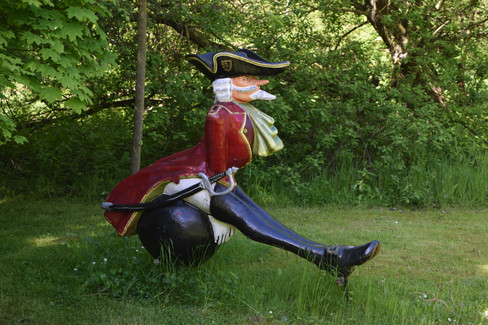Road Trip #8
- Christine Nikander

- Jun 22, 2021
- 2 min read
Exploring Holzminden.
A few weeks ago, we went for a longer road trip in Holzminden in Lower Saxony. After making a quick stop at Schwöbber Castle, where we had already been on our fourth road trip, we went to visit two castles that we had never been to before.
Schloß Hehlen
The new part of part of our travels started at Hehlen Castle. This is a moated castle, located directly at the Weser River. Built between 1579 and 1584, Hehlen Castle is considered to be one of the earliest castles built in the style of the Weser Renaissance. The castle was originally commissioned by Colonel Fritz von der Schulenburg and his wife, Ilse von Saldern. The von der Schulenburg family owned the castle until 1956. In 1958, the castle was bought by the owner of a Hanover coffee company called Machwitz Kaffee. The Machwitz family still owns the castle today.
Hehlen Castle consists of a square four-wing complex with two towers, and it has a closed-off inner courtyard. The castle was built of limestone and it has three stories. While the facade was originally plastered, today the exterior surfaces are unplastered. The castle is surrounded a large estate with a number stone farm buildings. In one of these farm buildings, there is a café and restaurant.
Bodenwerder
On our way from Hehlen Castle to Bevern Castle, we made a short stop in Bodenwerder to see a few statues of Statius von Münchhausen. Münchhausen lived from 1555 to 1633 and he is considered one of the most important commissioners of buildings in the style of the Weser Renaissance. There are a number of rather bizarre legends around Münchhausen, including that he rode a cannonball and unknowingly rod with only the front half of his horse to a watering place.
Schloß Bevern
Our final stop was at Bevern Castle. Built from 1603 to 1612, the moated castle is considered to be one of the most significant monuments of the Weser Renaissance. It was built by the master mason Johann Hundertossen and was commissioned by Statius von Münchhausen. The castle was built on the site of an old manor. It consists of four wings, each with two stories, and it has a nearly square-shaped inner courtyard.
Over the course of its history, the castle has been used as a retirement home, a button factory, a borstal, and a school for orphaned children. From 1933 onward, the castle was in the use of the Nazi Sturmabteilung and Wehrmacht. In May 1945, the castle was seized by US troops, who set up a transitional refugee camp for Polish and Russian prisoners of war and forced labor there. Later, the castle housed a displaced persons camp for around 800 homeless Latvians.
The castle was extensively renovated from 1981 to 1987. Today, the castle houses a local history museum and is used cultural center. The most recent of repainting of the west facade of the castle was finished in June 2012.
I am bit behind with posting at the moment, but I will share another story or two from the road in the coming days.








































Comments